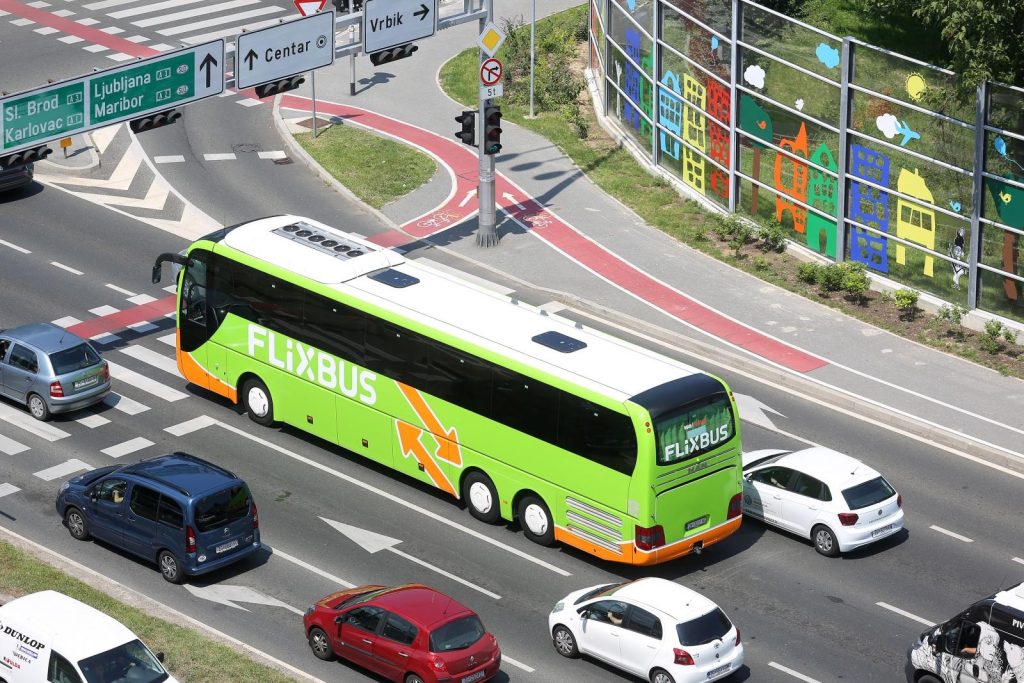HrTurizam reports that the German company Flixbus, a leader in the bus market that connects destinations within Croatia as well as the rest of Europe, has achieved very positive numbers and that they have little to envy a record season like that of 2019. FlixBus, as announced before the season, connected all international destinations that it connected in 2019, and in the period from June 1 to August 15, it carried 40 percent more passengers than in the same period in 2020.
The most pleasant surprise of the season were domestic passengers, who traveled within Croatia in almost the same number as in 2019. From other countries, most passengers were recorded from Germany, whose return is in line with the total figures, at a level higher than 70 percent from 2019. In the top 10 are Austrians, Slovenes, Italians, Hungarians, followed by travelers from Serbia, the Czech Republic, Bosnia and Herzegovina, Slovakia, and Switzerland.
From Italy, extremely affected by the pandemic, four times more passengers were recorded this year than in 2020. Despite stricter epidemiological measures for the entry of citizens from outside the European Union, and the severance of connections with Croatia in 2020, all tourists returned this season. Serbia with additional growth of 8 percent compared to the record 2019 when FlixBus connected Serbia and Croatia for the first time.
“The results of FlixBus during this year’s summer season have once again confirmed that there is no successful tourism without quality transport connections. It is my great pleasure that as a company that brings together Croatian carriers, we have enabled a large number of foreign and domestic tourists to travel safely and comfortably on vacation, as well as to confirm the business justification of connecting all previous destinations, including those due to the 2020 pandemic. “It didn’t work,” said Ante Grbeša, director of the FlixBus CEE South region.
Unfortunately, in the year of recovery from a significant drop in traffic in international and domestic transport last year as a result of the coronavirus pandemic, some domestic carriers this year continued to use the option of keeping non-operating lines for epidemiological measures.
This resulted in poorer connectivity for passengers, while at the same time carriers such as FlixBus and other Croatian carriers were not allowed to introduce new routes and new destinations within Croatia that were in demand. This situation caused negative consequences for the freedom of market competition, and above all for the mobility of Croatian citizens, but also their guests in the middle of the tourist season.
The positive trend in passenger transport is due to strong growth in demand, especially since mid-July. In that sense, the decision of the MMPI on the application of the European Regulation on Internal Transport is certainly to be welcomed, according to Flixbus.
Thanks to their efforts and the application of the legal provisions of EU regulations that deal with the area of passenger transport within the EU, it is possible to purchase tickets and transport passengers between Croatian cities on international routes, which was previously prohibited. Such a possibility strengthens the connection of domestic destinations, offers more departure options for passengers and certainly better prices, and has a positive effect on the environment due to the greater efficiency of the bus, conclude Flixbus.
New lines announced
From September 15, FlixBus will introduce new European lines in addition to the existing ones, so it will be possible to reach Dalmatian cities via Split directly from Brussels and Hanover, while Zadar will be connected with Berlin and Maastricht. It will also be possible to travel to Zagreb from Antwerp and Amsterdam, and from Amsterdam, it will also be possible to travel directly from Slavonski Brod, which also connects with Frankfurt. The county will be connected with Antwerp and Bonn.
Since entering the domestic market in 2016, FlixBus, with its 12 local partners, more than 140 buses, and 700 drivers, has connected more than 250 destinations across Croatia and Europe and enabled direct travel to 12 countries, which has encouraged higher inflows and mobility tourist.
For more information on bus travel in Croatia, take a look at the Total Croatia page.
For more, make sure to check out our dedicated travel section.









